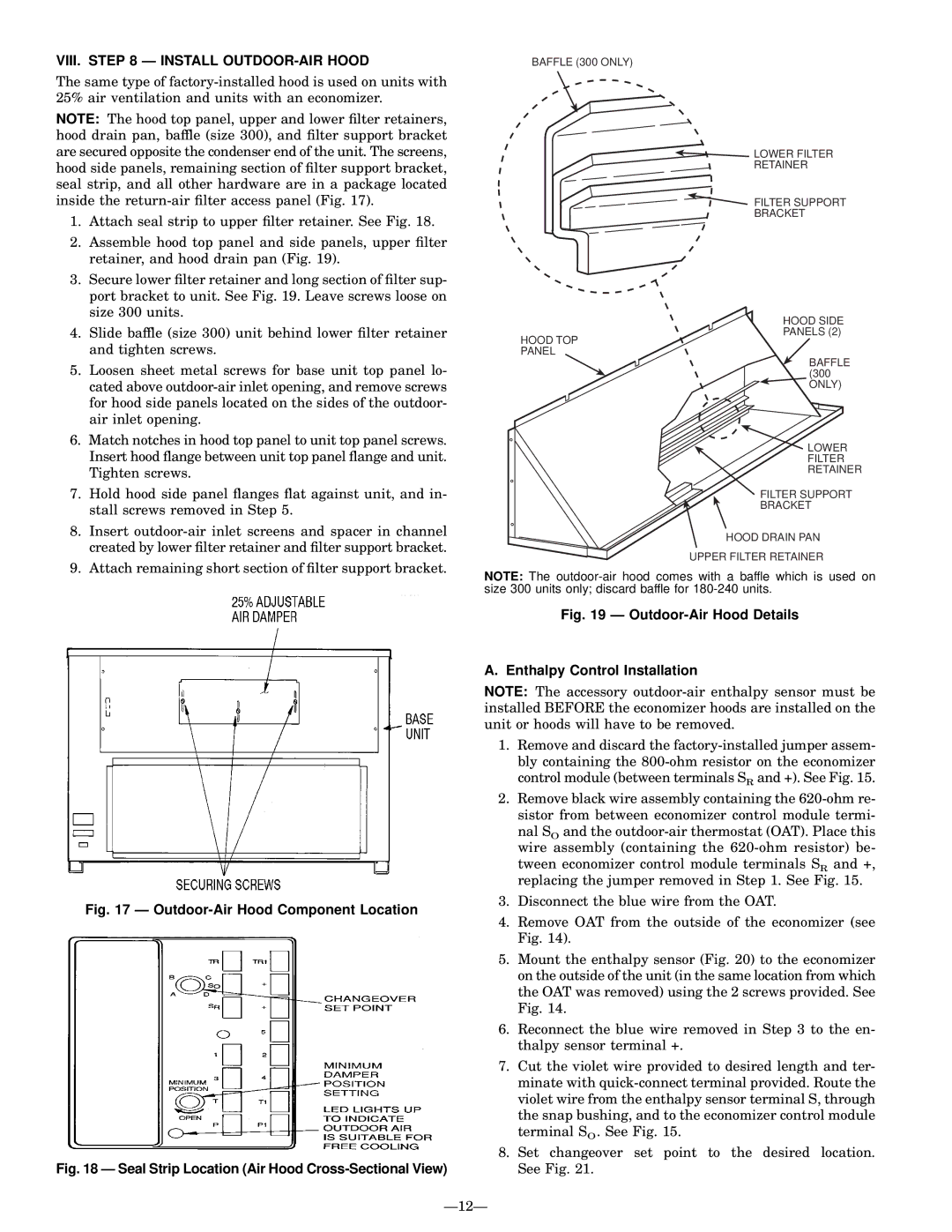559F specifications
The Bryant 559F is a standout heating and cooling solution, designed with both efficiency and performance in mind. This model is a part of Bryant's legacy of reliability, combining innovative technology with user-friendly features to ensure a comfortable indoor environment throughout the year.One of the most notable features of the Bryant 559F is its high efficiency rating. With a Seasonal Energy Efficiency Ratio (SEER) that exceeds industry standards, this model is engineered to significantly reduce energy consumption, translating to lower utility bills and a smaller carbon footprint. The system is designed to perform efficiently even in extreme temperatures, making it a reliable choice for households in diverse climates.
Incorporating advanced inverter technology, the Bryant 559F automatically adjusts its output to meet the precise cooling and heating needs of the space, providing consistent comfort while minimizing energy usage. This adaptive capability reduces energy waste, resulting in more efficient operation compared to traditional systems that constantly cycle on and off.
The Bryant 559F also features an integrated Wi-Fi capability, allowing users to control their heating and cooling system remotely via a smartphone app. This modern convenience empowers homeowners to create schedules, adjust settings, and monitor performance from virtually anywhere, enhancing both comfort and energy management.
Another characteristic of the Bryant 559F is its quiet operation. Thanks to sound-dampening features, the system is designed to operate at lower noise levels, providing a peaceful indoor environment. This makes it particularly suitable for residential applications where noise can be a concern, such as bedrooms and home offices.
Additionally, the Bryant 559F is equipped with advanced air filtration and purification systems that help improve indoor air quality. This is particularly beneficial for allergy sufferers or those concerned about pollutants in the air. The system can remove dust, pollen, and other particulates, creating a healthier living space.
Furthermore, the Bryant 559F model is backed by a robust warranty, showcasing Bryant's commitment to quality and customer satisfaction. Overall, the Bryant 559F combines innovative technology, energy efficiency, and user-friendly features to deliver a reliable heating and cooling solution that meets the needs of modern households. Its blend of performance, comfort, and convenience makes it an excellent choice for anyone looking to enhance their indoor climate control solutions.

